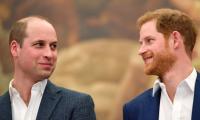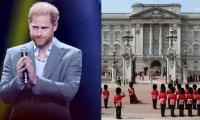LAHORE: Just 10 days after his 66th birthday, Chaudhry Mohammad Sarwar will assume charge as the 32nd Governor of Punjab on August 28 (Tuesday), though he will not be residing at the beautiful 90-acre colonial building of the Governor's House Lahore, the land for which was purchased for a paltry sum of Rs 2,500 by the British and this place was utilized as a residence for the British Lieutenant-Governor of the province.
Since Punjab's first post-partition Governor, Sir Francis Mudie, who served from August 4, 1947 to August 2, 1949, Punjab has previously seen 31 permanent Governors, meaning thereby that the average tenure of a Governor here in country's largest province has been about 2.29 years since August 1947.
This will be Chaudhary Sarwar's second tenure as Governor Punjab. Sarwar was first sworn in as Governor of Punjab on August 5, 2013, though his tenure as constitutional head of this province could last one year, five months and 24 days only—-just short of 18 months till January 30, 2015.
Born in Chichawatni near Faisalabad, Sarwar had earlier served as a Labour Party legislator in Britain from 1997 to 2010 and was the first Muslim to sit in the British parliament.
Having renounced his British citizenship in August 2013 following confirmation of his governorship, Sarwar had established a cash and carry business "United Wholesale Grocers" in Scotland with his brother in 1982, but after parting ways with his sibling, he had gone on to operate the same business with a new name, the "United Wholesale (Scotland) Limited." The 169-year history of the appointment of Punjab's Lieutenant Governors and Governors:
The history of the appointment of Lieutenant Governors and Governors in Punjab is over 169 years old.
After Punjab was annexed in 1849 by the British East India Company through the Treaty of Lahore after the Second Anglo-Sikh War, the first Lieutenant Governor of this province was Sir John Laird Mair Lawrence (1811-1879), who had served between April 1, 1849 and February 25, 1859.
According to the London Gazette, he was the Viceroy of India from 1864 to 1869, starting his diplomatic career as Delhi’s Tax Collector and Magistrate. He was the real brother of Brigadier General Sir
Henry Montgomery Lawrence, who had died defending Lucknow during the Indian Mutiny in 1857.
Lahore’s fabulous 176-acre Lawrence Gardens (later re-named Bagh-e-Jinnah), right opposite the Governor’s House, were named after Sir Henry Montgomery Lawrence; and so were Lahore’s Lawrence Road and Lawrence College Ghora Galli in Murree.
Interestingly, from 1849 to 1924, Punjab was ruled by as many as 16 Lieutenant Governors and many cities, educational institutions, hospitals and roads in Punjab (especially Lahore) are still named after many of them.
The Punjab Lieutenant Governors between 1849 and 1924 included: Sir Robert Montgomery (Montgomery, now Sahiwal, was named after him), Sir Donald Friell McLeod (Lahore’s famous McLeod Road was named after him), Sir Henry Marion Durand (Lahore’s famous Durand Road was named after him and the2,640 kilometers long Pak-Afghan border, also known as the Durand Line, was named after his son Sir Mortimer Durand), Sir Robert Henry Davies, Sir Robert Eyles Egerton (Lahore’s busy Egerton Road was named after him), Sir Charles Umpherston Aitchison (he had established the prestigious Aitchison College of Lahore and the Punjab University. Lady Aitchison Hospital of the city was named after his wife), Sir James Broadwood Lyall (Lyallpur, later re-named Faisalabad, was named after him. His grandson Mark Lyall Grant had served as British Ambassador to Pakistan a few years ago), Sir Dennis Fitzpatrick, Sir William Mackworth Young, Sir Charles Montgomery Rivaz (Lahore’s downtown locality Rivaz Garden was named after him), Sir Denzil Charles Jelf Ibbetson, Sir Thomas Gordon Walker, Sir Lousis William Dane (The Danepur Lane in Lahore’s bureaucratic residential colony of GOR I was named after him), Sir James MacCrone Douie, Sir Michael Francis O’Dwyer and Sir Edward Douglas Maclagan (Lahore’s Maclagen Road was named after him).
The seven governors from 1924 to 1947 were: Sir William Malcolm Hailey (famous Hailey College of Commerce in Punjab University Lahore is named after him), Sir Geoffrey Fitzhervey de Montmorency, Sir Sikandar Hayat Khan, Sir Herbert William Emerson, Sir Henry Duffield Craik, Sir Bertrand James Glancy and Sir Evan Meredith Jenkins.
The first Muslim Governor of Punjab was Sir Sikander Hayat Khan (1892-1942).
Three of these pre-partition Punjab Governors-Sir Geoffrey Fitzhervey de Montmorency, Sir Sikandar Hayat Khan and Sir Herbert William Emerson-had gone on to enjoy two tenures each in office.
The first governor of West Punjab (after the 1947 partition) was Sir Francis Mudie (1890-1976). He was the last British Governor of Sindh and after the partition of India and Pakistan in August 1947, he had continued to serve as Governor of the West Punjab.
The governors who ruled Punjab during the 1947 to 1955 period were Sir Francis Mudie, Sardar Abdur Rab Nishtar, Ibrahim Ismail Chundrigar, Mian Aminuddin, Habib Ibrahim Rahimtoola and Nawab Mushtaq Ahmed Gurmani.
In 1955, the province of West Punjab was dissolved and became the Punjab province.
In 1955, the post of Punjab Governor was consequently abolished and former Interior Minister, Mushtaq Ahmed Gurmani, was posted as the first Governor of West Pakistan. In his role as Minister without portfolio, Gurmani had signed the Karachi Agreement of 1949 that had established a ceasefire line between Pakistani and Indian areas of Kashmir, which was later known as the Line of Control. In 1951, he had served as Chief Executive of the Kashmir Affairs and Northern Areas.
Between October 1955 and September 1966, Nawab Mushtaq Ahmed Gurmani, Akhtar Hussain and the seventh Nawab of Kalabagh, Amir Muhammad Khan, had served on this post.
Between September 1966 and March 1969, Lt. General (R) Musa Khan (the fourth Commander-in-Chief of the Pakistan Army) had called shots on this position.
After General Musa Khan, the pre-independence Karachi Mayor, former Sindh Chief Minister, Federal Minister, country’s former High Commissioner to Australia and an ex-Chief Editor "Daily Dawn," Yousaf Abdullah Haroon, had the Governor’s House in his control for just five days between March 20, 1969 and March 25, 1969. He had been Quaid-e-Azam’s ADC too.
Haroon was followed by Lt. General Attique-ur-Rehman, who had served between March 25, 1969 and August 29, 1969. He was the West Pakistan Martial Law Administrator in General Yahya Khan’s regime. He was the one who had implemented the dissolution of the One Unit Scheme. Then came Martial Law Administrator General Tikka Khan for just three days between August 29, 1969 to September 1, 1969.
Former Pakistan Air Force Commander-in-Chief and hero of the 1965 Indo-Pak War, Air Marshal (R) Malik Nur Khan Tamman also had a brief stay in this office between September 1, 1969 and February 1, 1970.
Between October 14, 1955 and July 1, 1970, Punjab had formed part of the larger province of West Pakistan.
From July 1, 1970 till date, about two dozen Governors have gone on to assume charge as Governors of Punjab.
Till date since 1970, most of the Punjab Governors have hailed from Pakistan People’s Party and late Salman Taseer remains the only unfortunate one to be assassinated in office. The post-1970 Punjab Governors (Acting and permanent) include:
Lt General Attiqur Rahman, Ghulam Mustafa Khar, Hanif Ramay, Nawab Sadiq Hussain Qureshi, Mohammad Abbas Khan Abbasi, Aslam Riaz Hussain, Vice Chief of Army Staff Lt. General Sawar Khan, Lt. General Ghulam Jilani Khan, Makhdoom Sajjad Hussain Qureshi, Pakistan’s former Army Chief General Tikka Khan, Mian Muhammad Azhar, Chaudhary Altaf Hussain, Lt General Raja Saroop Khan, Khawaja Tariq Rahim, Shahid Hamid, Zulfiqar Ali Khosa, Lt General Muhammad Safdar, Lt General Khalid Maqbool, Salmaan Taseer, Rana Iqbal Khan between January 4 and January 13, 2011 after Taseer’s assassination, Latif Khosa, Makhdoom Ahmed Mahmood, Chaudhary Muhammad Sarwar, Rana Iqbal and Rafique Rajwana. There have been a few occasions when Punjab was administratively controlled by Governors only.
These were the times of the Martial Laws of 1958-1972 and 1977-1985, and Governor Rules of 1999-2002.
In the case of Punjab, there was direct governor rule in 1949-1951, when the provincial chief minister of that time was removed and assemblies were dissolved.
Very few people would know that covered by lush-green sprawling lawns, the Governor's House Lahore was build around the tomb of Mohammed Kasim Khan (died 1635), a cousin of the Mughal emperor Akbar. Kasim Khan, as chronicles of history reveal, was a great patron of sports, and near his grave is a "kushtee gumbaz" or the dome of the wrestlers.
The famous "Darbar Hall" of the Governor's House Lahore found its name after the Prince of Wales wanted to hold a darbar (open public court) here.
Hence, a magnificent room with a high oak ceiling and a balustrade balcony running all round was built for the British Prince to hold a court.
The balcony of the "Darbar Hall" at Governor's House Lahore still has painted portraits of the British administrators of Lahore.







